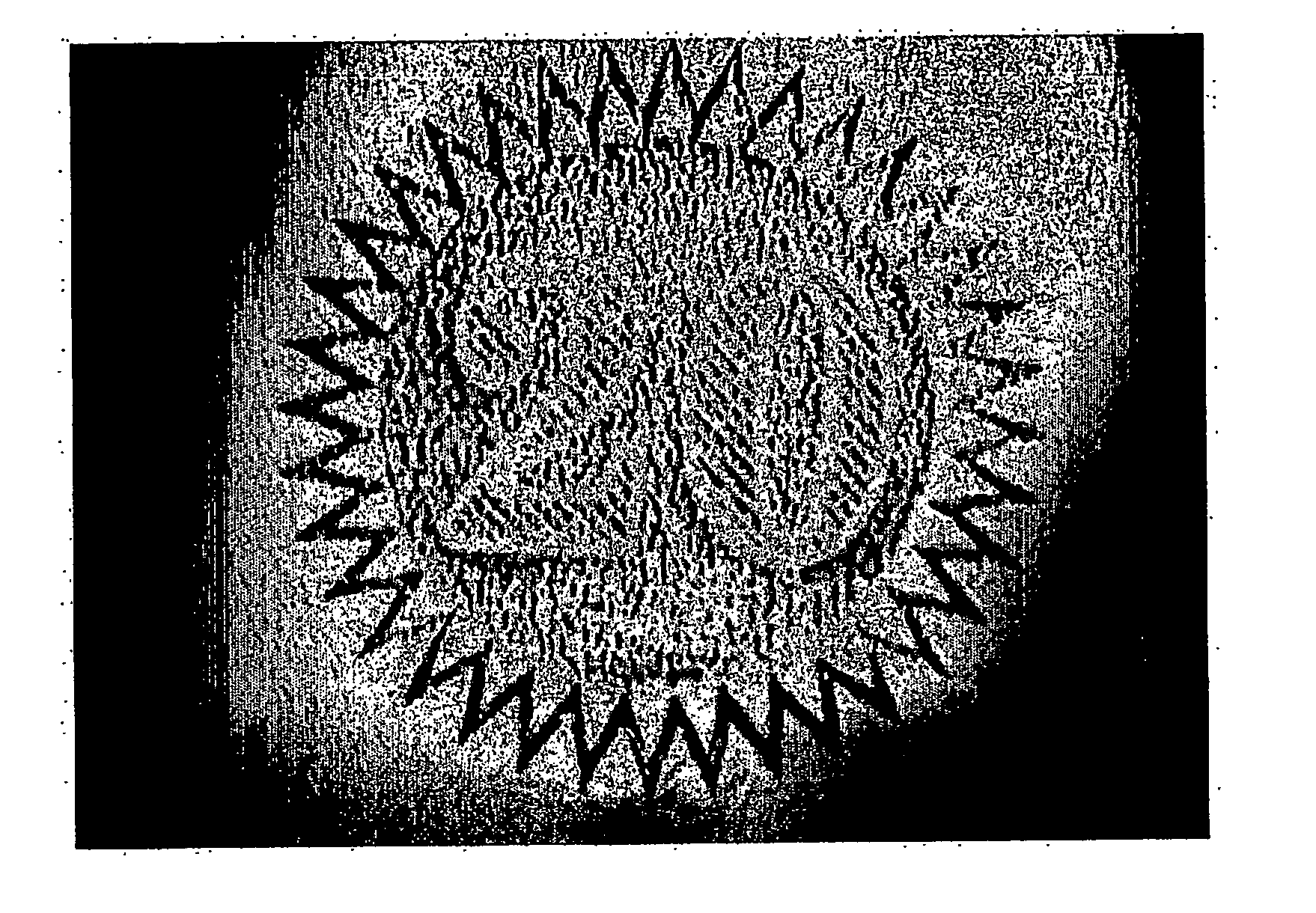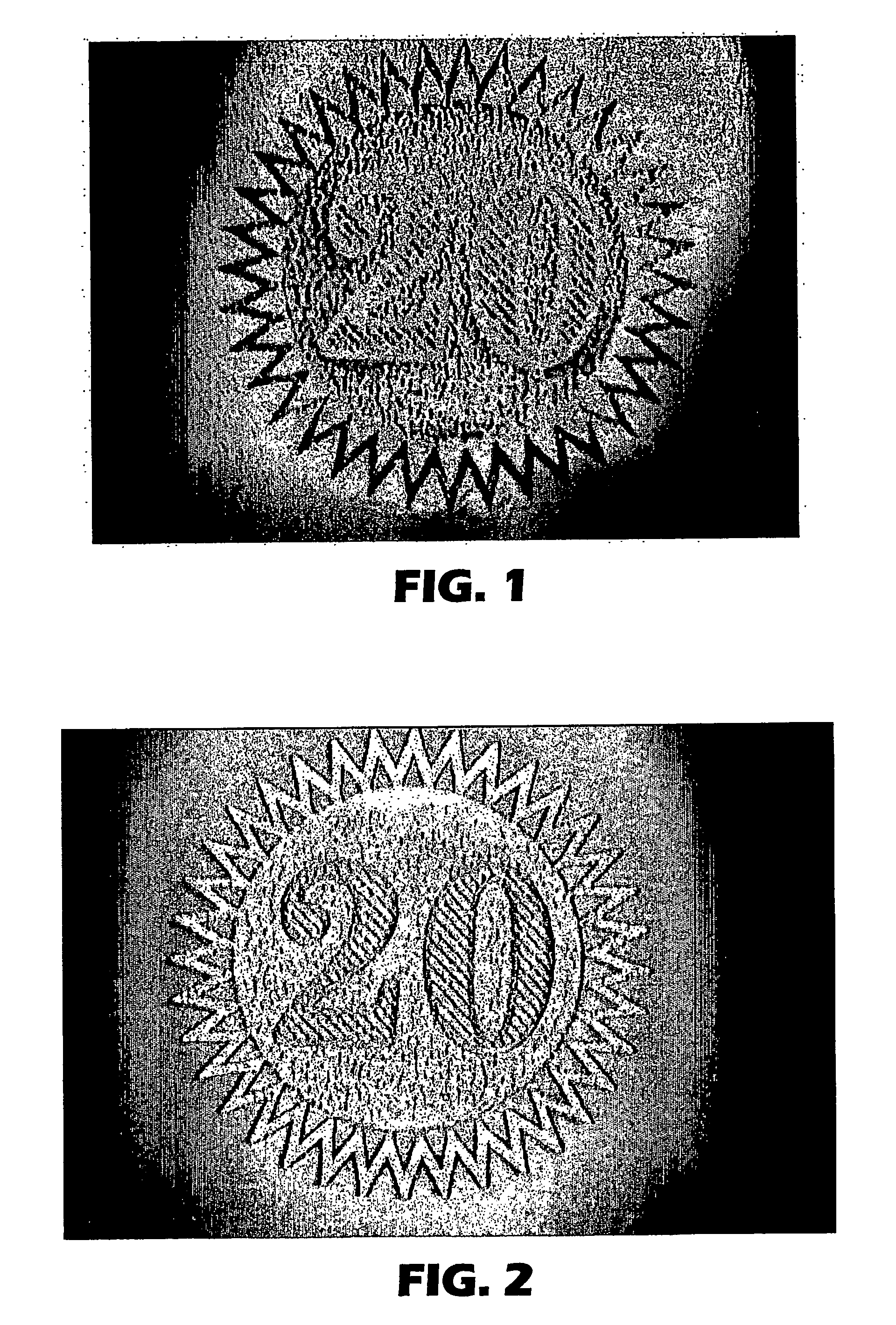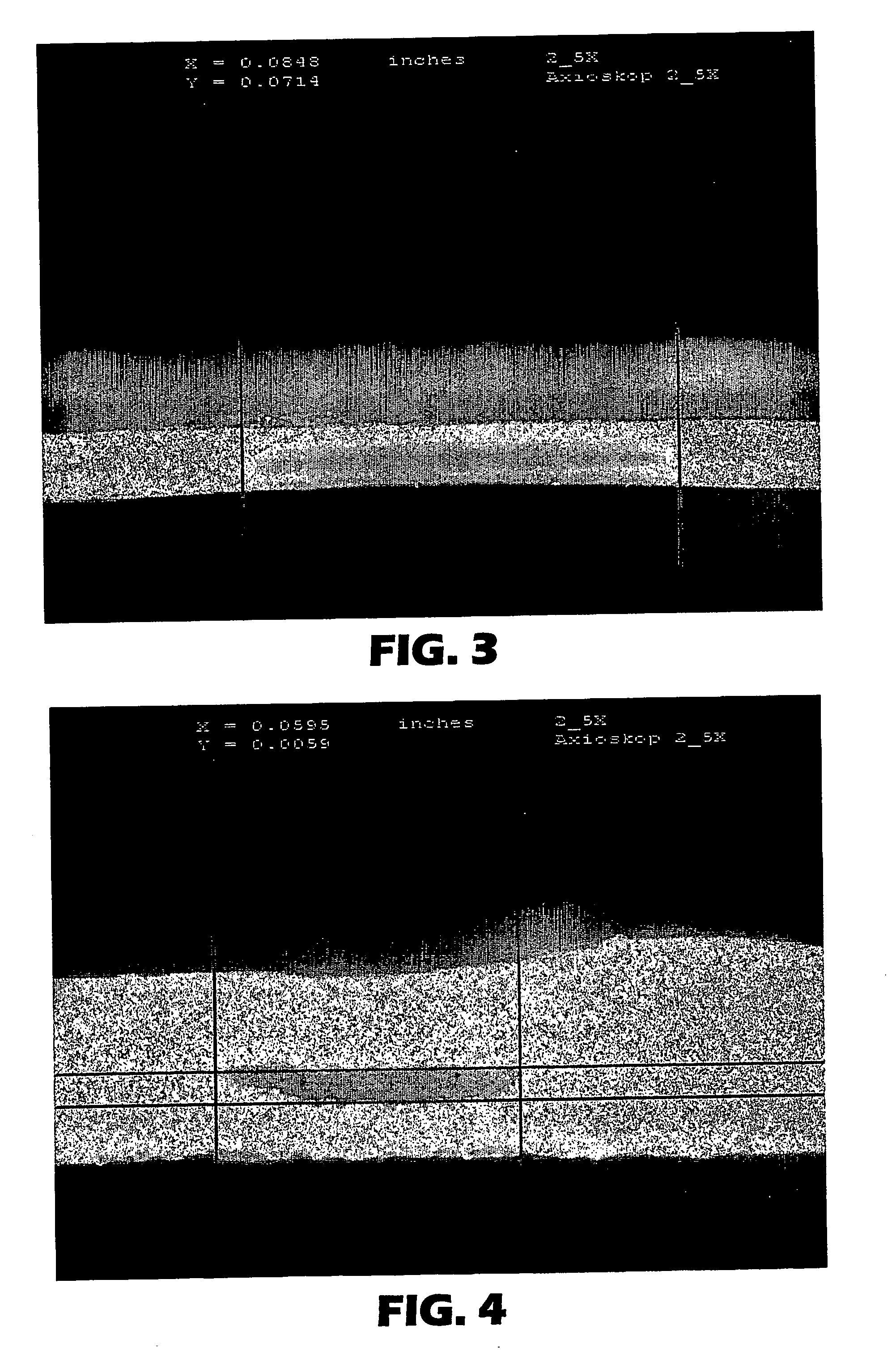Foam security substrate
a technology of foam and substrate, applied in the field of foam security substrate, can solve the problems of difficult copying technique, poor durability of foam, damage, etc., and achieve the effect of preventing counterfeiting and high melt strength
- Summary
- Abstract
- Description
- Claims
- Application Information
AI Technical Summary
Benefits of technology
Problems solved by technology
Method used
Image
Examples
example 1
[0160] A mixture of 43% high melt strength polypropylene (Profax™ PF814, Montell North America, Inc., Wilmington, Del.), 40% conventional polypropylene, (PP 3376 Fina Inc., Dallas, Tex.), 15% elastomeric polyethylene, (Affinity™ 8200 Dow Chemical, Midland, Mich.), and 1.5% by weight of FM1307 chemical blowing agent (50% azodicarbonamide loaded in polyethylene) (Ampacet Co., Tarrytown, N.Y.), and 0.5% “Enchanted Forest” concentrate (a 4:1 green pigment / PP ratio, PolyOne Corp.) was extruded in a 6.4 cm single screw extruder (Davis-Standard Corp., Cedar Grove, N.J.) equipped with a Saxton single stage screw at 40 rpm and a temperature profile 144° C.-226° C.-147° C. The exit melt temperature was 134° C., creating an exit pressure of 124 kg / cm2 (1760 psi). Approximately half of the extruded mixture was split into two streams using a “T” junction to produce two skin layers in a 20.3 cm feedblock / die assembly at 182° C. A 44 mm Davis Standard single screw extruder was used to feed (23 RPM...
example 2
[0165] The multilayer foam of Example 1 was embossed using the process described in the Test Methods section. The material was embossed at 91° C. and a pressure of 39 kg / lineal cm of nip at 1.5 m / min. Embossing did not affect the overall opacity, bending stiffness, or tear properties of the foamed material. The images were embossed, with transparent indicia from the 140-micron features and a textured area from the shorter features. The textured embossed regions were slightly identifiable in reflected light and very identifiable in transmitted light, providing a watermark-type security feature. The image transparency was measured to be 0.26. This corresponds to a good image transparency, as the images were apparent in reflected and transmitted light.
[0166] After subjecting the foamed material to the Crumple Evaluation test, the sample was 173 micrometers thick in some spots, and remained 150 micrometers thick after smoothing with 2.1 kPa force, as compared to a thickness of 130 micr...
example 3
[0167] A mixture of 43.5% high melt strength polypropylene (Profax™ PF814, Montell North America, Inc., Wilmington, Del.), 40% conventional polypropylene, (PP 3376 Fina Inc., Dallas, Tex.), 15% elastomeric polyethylene, (Affnity™ 8200 Dow Chemical, Midland, Mich.), and 1.5% by weight of FM1307 chemical blowing agent (50% azodicarbonamide loaded in polyethylene) (Ampacet Co.) was extruded in a 6.4 cm single screw extruder equipped with a Saxton single stage screw at 40 rpm and a temperature profile of 138° C.-224° C.-148° C. The exit melt temperature was 137° C., and the exit pressure was 16.6 Mpa. Approximately half of the extruded mixture was split into two streams using a “T” junction to produce two skin layers in a 20.3 cm feedblock / die assembly at 182° C. A 38 mm Davis Standard single screw extruder was used to feed (23 RPM) a nonfoamed core layer into the die. The core layer consisted of a 74 / 25 / 1 blend of PP 3376, Wollastonite 520S, and Signal Green fluorescent colorant (Day-G...
PUM
| Property | Measurement | Unit |
|---|---|---|
| melt strength | aaaaa | aaaaa |
| melt strength | aaaaa | aaaaa |
| wavelength | aaaaa | aaaaa |
Abstract
Description
Claims
Application Information
 Login to View More
Login to View More - R&D
- Intellectual Property
- Life Sciences
- Materials
- Tech Scout
- Unparalleled Data Quality
- Higher Quality Content
- 60% Fewer Hallucinations
Browse by: Latest US Patents, China's latest patents, Technical Efficacy Thesaurus, Application Domain, Technology Topic, Popular Technical Reports.
© 2025 PatSnap. All rights reserved.Legal|Privacy policy|Modern Slavery Act Transparency Statement|Sitemap|About US| Contact US: help@patsnap.com



